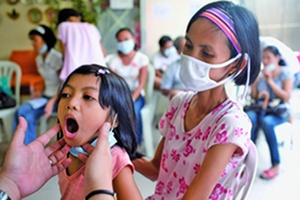Children and tuberculosis: Hidden epidemic
A scourge that must be stamped out
Although virtually no public or political attention is paid to it as a public health issue, tuberculosis remains among the top 10 killers of children worldwide. The World Health Organization (WHO) estimates that approximately 176,000 children have died, but the consensus among researchers says that actual figures are higher. In 2009 alone, at least 1 million children became sick with TB.
A report titled "Children and Tuberculosis: Exposing A Hidden Epidemic," states that turberclosis preys on the most vulnerable children - the orphaned, the malnourished, those living with HIV - and it causes an almost unimaginable burden to children and their families.
According to Dr. Jeffrey Starke, a leading TB specialist at Texas Children’s Hospital, childhood TB “is a fundamentally different disease from adult tuberculosis. Its proper diagnosis, treatment, and prevention require specific planning and resources. We must consider the unique nature of childhood TB if we’re to successfully eliminate TB anywhere in the world.”
"Approximately 9 million people become sick with TB each year. At least 10-15 percent of these cases are in children under 15 — but the percentage is probably much higher, because childhood TB is under-reported," the report says.
Most children have a type classified as sputum smear-negative, which makes them less likely to spread the disease to others — but it is still deadly if left untreated. Because on average children are less contagious than adults, they’ve been overlooked by national TB programs across the world.
"While adults most often get TB in their lungs, in children the disease often spreads to other parts of the body,” the report continues. “ Children are therefore more likely than adults to develop severe forms including TB meningitis. TB meningitis occurs when the bacteria spread to the central nervous system, including the brain. The bacteria inflame the tissue that protects the brain, causing it to swell. TB meningitis is most common in children under two years old, and the disease is almost always fatal without treatment. TB can attack virtually any part of a child’s body in similar fashion."
It is more cost-effective to prevent disease than it is to treat it. The most effective way to prevent childhood TB is to stop the disease from spreading in the wider community.
“Even with the limited tools currently available, better organization of services and aggressively identifying recently exposed and infected children would prevent tens of thousands of tuberculosis cases in children every year,” said Dr. Starke.


